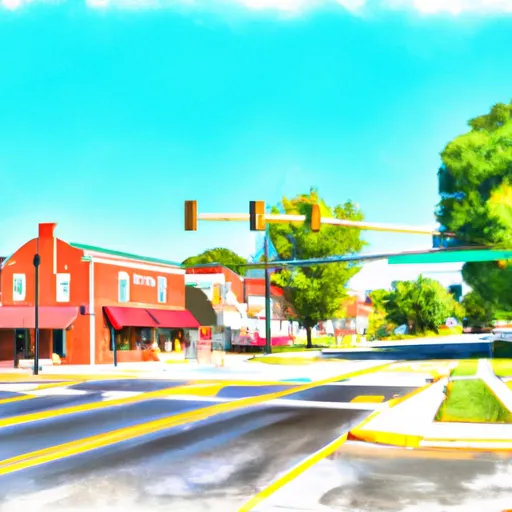-
 Snoflo Premium
Snoflo Premium
Get unlimited access to all our content
With no Ad interruptions! - Start Your Free Trial Login with existing account
Mc-Henry
Eden Index
Climate
7.3
•
Recreation
4.6
•
Community
3.3
•
Safeguard
5.3/10

McHenry, Illinois is a charming city located in McHenry County, approximately 50 miles northwest of Chicago. The climate in McHenry can be characterized as a continental climate with cold winters and hot summers. Average temperatures range from the 20s °F (-6 °C) in winter to the 80s °F (27 °C) in summer, with moderate rainfall throughout the year.
Hydrology in McHenry is dominated by the Fox River, which flows through the city and offers various recreational opportunities. The river is known for its excellent fishing, particularly for smallmouth bass, walleye, and catfish. Boating, kayaking, and canoeing are also popular activities on the river.
In addition to the Fox River, McHenry boasts several parks and green spaces that provide outdoor recreation opportunities. Veterans Memorial Park offers amenities such as walking trails, picnic areas, and sports fields. Moraine Hills State Park, just east of McHenry, offers hiking, fishing, and boating amidst its rolling hills and lakes.
With its diverse outdoor opportunities, McHenry, Illinois is a great place for nature enthusiasts and those seeking a balance between urban living and natural beauty.
What is the Eden Index?
The Snoflo Eden Index serves as a comprehensive rating system for regions, evaluating their desirability through a holistic assessment of climate health, outdoor recreation opportunities, and natural disaster risk, acknowledging the profound impact of these factors on livability and well-being.
Climate Health Indicator (CHI): 7.3
Mc-Henry receives approximately
880mm of rain per year,
with humidity levels near 84%
and air temperatures averaging around
9°C.
Mc-Henry has a plant hardyness factor of
5, meaning
plants and agriculture in this region thrive during a short period during spring and early summer. Most
plants will die off during the colder winter months.
By considering the ideal temperature range, reliable water supplies, clean air, and stable seasonal rain or snowpacks, the Climate Health Indicator (CHI) underscores the significance of a healthy climate as the foundation for quality living.
A healthy climate is paramount for ensuring a high quality of life and livability in a region, fostering both physical well-being and environmental harmony. This can be characterized by ideal temperatures, reliable access to water supplies, clean air, and consistent seasonal rain or snowpacks.
Weather Forecast
Streamflow Conditions
Upper Illinois
Area Rivers
Upper Illinois
Snowpack Depths
Upper Illinois
Reservoir Storage Capacity
Upper Illinois
Groundwater Levels
Recreational Opportunity Index (ROI): 4.6
The Recreational Opportunity Index (ROI) recognizes the value of outdoor recreational options, such as parks, hiking trails, camping sites, and fishing spots, while acknowledging that climate plays a pivotal role in ensuring the comfort and consistency of these experiences.
Access to outdoor recreational opportunities, encompassing activities such as parks, hiking, camping, and fishing, is crucial for overall well-being, and the climate plays a pivotal role in enabling and enhancing these experiences, ensuring that individuals can engage in nature-based activities comfortably and consistently.
Camping Areas
| Campground | Campsites | Reservations | Toilets | Showers | Elevation |
|---|---|---|---|---|---|
| Walnut Point State Park | 60 | 658 ft | |||
| Fox Ridge State Park | 45 | 728 ft | |||
| Piney - LBL | 300 | 385 ft | |||
| Gibson City Park | 4 | 731 ft | |||
| Sam Parr State Park | 80 | 524 ft | |||
| Paris Landing State Park | 63 | 392 ft | |||
| Prairie Pines Campground | None | 730 ft | |||
| Natchez Trace State Park | 50 | 637 ft | |||
| Beech Bend | None | 373 ft | |||
| Rushing Creek - LBL | 56 | 402 ft |
Catastrophe Safeguard Index (CSI):
The Catastrophe Safeguard Index (CSI) recognizes that natural disaster risk, encompassing floods, fires, hurricanes, and tornadoes, can drastically affect safety and the overall appeal of an area.
The level of natural disaster risk in a region significantly affects safety and the overall livability, with climate change amplifying these risks by potentially increasing the frequency and intensity of events like floods, fires, hurricanes, and tornadoes, thereby posing substantial challenges to community resilience and well-being.
Community Resilience Indicator (CRI): 3.3
The Community Resilience Indicator (CRI) recognizes that education, healthcare, and socioeconomics are crucial to the well-being of a region. The CRI acknowledges the profound impact of these elements on residents' overall quality of life. By evaluating educational resources, healthcare accessibility, and economic inclusivity, the index captures the essential aspects that contribute to a thriving community, fostering resident satisfaction, equity, and social cohesion.

